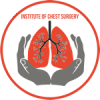A pneumothorax is a medical condition that involves the presence of air or gas in the pleural space, the thin membrane surrounding the lungs. This abnormal collection of air can lead to lung collapse, causing significant respiratory distress and potential complications. Understanding the causes, symptoms, and treatment of a pneumothorax is essential for prompt diagnosis and appropriate management. In this comprehensive blog post, we will delve into the details of pneumothorax, its various causes, and the importance of early detection and intervention.
What is a Pneumothorax?
A pneumothorax occurs when air accumulates in the pleural space, causing pressure on the lung, leading to partial or complete lung collapse. The pleural space is a crucial area that allows the lungs to expand and contract during breathing. When air enters this space, it disrupts the delicate balance necessary for normal lung function, resulting in breathing difficulties.
Causes of Pneumothorax:
- Trauma: One of the most common causes of pneumothorax is trauma, such as a car accident, a fall from a significant height, or a penetrating injury to the chest. These events can cause a sudden rupture in the lung or the airway, allowing air to escape into the pleural space.
- Spontaneous Pneumothorax: Spontaneous pneumothorax occurs without any apparent cause and can be further categorized into two types:
- Primary Spontaneous Pneumothorax: This type typically affects young, tall, and thin individuals, especially males. It occurs due to the rupture of small air sacs (blebs) on the lung’s surface, which can happen during sudden changes in pressure or physical exertion.
- Secondary Spontaneous Pneumothorax: This type is more common in individuals with underlying lung conditions, such as chronic obstructive pulmonary disease (COPD), asthma, or tuberculosis. The lung tissue in these cases is already weakened, making it more susceptible to spontaneous rupture.
- Medical Procedures: Certain medical procedures that involve the chest area, such as lung biopsies, central line insertion, or mechanical ventilation, carry a small risk of causing a pneumothorax. These procedures can inadvertently introduce air into the pleural space.
- Lung Diseases: Chronic lung diseases, including cystic fibrosis and pneumonia, can lead to the formation of air-filled spaces or abscesses in the lung, increasing the risk of pneumothorax.
- Lung Infections: Infections like tuberculosis or fungal lung infections can cause lung tissue damage and increase the likelihood of a pneumothorax.
- Ruptured Bullae: Bullae are large air-filled spaces that develop within the lung due to various factors, including smoking. If a bulla ruptures, it can lead to a pneumothorax.
- Mechanical Ventilation: Patients on mechanical ventilation, especially with high pressure settings, may be at risk of developing a pneumothorax due to increased pressure on the lungs.
Symptoms of Pneumothorax:
The symptoms of a pneumothorax can vary depending on the severity and underlying cause. Common signs and symptoms include:
- Sudden, sharp chest pain, often on one side.
- Shortness of breath or difficulty breathing.
- Rapid breathing and increased heart rate.
- Cyanosis (bluish discoloration of the lips or skin).
- Decreased or absent breath sounds on the affected side during auscultation.
Diagnosis of Pneumothorax:
To diagnose a pneumothorax, healthcare providers may perform the following tests:
- Chest X-ray: A chest X-ray is often the first imaging test performed to confirm the presence of a pneumothorax. It can reveal the characteristic “collapsed lung” appearance.
- Computerized Tomography (CT) Scan: A CT scan provides more detailed images of the chest, helping to identify the location and extent of the pneumothorax.
- Arterial Blood Gas (ABG) Test: ABG analysis can assess the levels of oxygen and carbon dioxide in the blood, providing valuable information about lung function.
Treatment of Pneumothorax:
The treatment of a pneumothorax depends on its severity and underlying cause. The primary treatment options include:
- Observation: Small, asymptomatic pneumothoraces may resolve on their own without intervention. In such cases, close monitoring and observation may be sufficient.
- Needle Aspiration: For small to moderate-sized pneumothoraces, a needle can be inserted into the chest to remove the accumulated air and relieve pressure on the lung.
- Chest Tube Insertion: In more extensive or symptomatic pneumothoraces, a chest tube is inserted into the pleural space to drain the air and allow the lung to re-expand properly.
- Surgery: In recurrent or severe cases of pneumothorax, surgical intervention may be necessary. The procedure involves repairing the damaged lung tissue and preventing future recurrences.
Conclusion:
A pneumothorax is a potentially serious condition that requires prompt diagnosis and appropriate management. Understanding the various causes and recognizing the symptoms can lead to early detection and timely intervention, improving the patient’s prognosis. If you experience sudden chest pain or difficulty breathing, seek immediate medical attention to ensure proper evaluation and treatment.
—
In this blog post, we’ve covered the definition of a pneumothorax, its causes, symptoms, diagnosis, and treatment options. Always consult with a healthcare professional for personalized advice and guidance regarding any medical condition.






